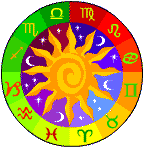Star Constellations: The Lion
Created | Updated Aug 16, 2005
$Revision: 1.4 $.
This entry is part of the h2g2as constellations
project.
There exists an external provisional star chart created for this entry.

| Latin: | leo |
| genitive: | leonis |
| short form: | Leo |
| area: | 947 square degrees |
| coordinates: | 11h, +15° |
| zodiac: | yes, 11.8.–16.9. |
| origin: | ancient |
The Lion is one of the oldest constellations, and surely it is a very
impressive one. It can be viewed best at the beginning of March. Then it is
visible in the evening sky.
It was already known in the Babylonian and Egyptian cultures. In Egypt the
annual Nile flood has always been vital for all life there, and it used to
happen when the sun stood in the Lion.
For the ancient Greek people it had two possible interpretations: Mostly it
was the Nemean Lion with skin of stone and metall that Heracles had killed.
Or it was the Lioness of Semiramis, that had caused indirectly the tragic
deaths of two young lovers called Pyramus and Thisbe,1 and she stands in the sky as an admonition for parents
that thwart the love of their children.
Very rarely Lion's main star Regulus is also called Kabeleced, Kalb,
or Cor Leonis (Arabian and Latin for 'the lion's heart'). Together with
Antares (Scorpion), Fomalhaut (Southern Fish), and Aldebaran (Taurus), Regulus
is one of the 'Four Royal Stars' in Mesopotamian mythology. Due to its
closeness to the ecliptic, Regulus sometimes forms appealing constellations
with the planets and the moon.
Algieba is regarded as one of the most marvellous double stars. Both
partners are quite bright (2.4m and 3.6m) and have
slightly different colours. Their distance is 4.3''.
In the fictional Star Trek universe, the first battle between the Federation
and the Borg happened at Wolf 359. Curiously enough this is a real
star in Lion, in the vicinity of the point where the ecliptic is closest to the
constellation Sextans (Sex). With a distance of about 7.6 ly it is
indeed one of Earth's nearest neighbours. However, it is a very faint dwarf
star (13.7m visual), so not worth the look. It has its strange name
from the German astronomer Max Wolf (1863–1932) who searched the sky for
peculiar stars and catalogued them.
For amateur astronomers looking for nice Messier objects or other
interesting nebulae, the Lion is rather boring. They should have a look at the
neighbour constallations Coma Berenices and Virgo. The elliptical galaxy
M105 is pretty easy to find, even with field glasses, however it doesn't
has much structure; rather a star-like core.
The meteor shower Leonids has its virtual point of origin near
γ Leo. You can see it from 14th to 20th November,
the maximum usually happend to be on the 17th. The number of objects per hour
is very difficult to predict for this shower (expect about 10), however
the objects are extraordinarily fast. Its rocks come from the recurrent comet
1866 I, also known as Tempel-Tuttle.
Stars, Clusters, and Nebulae
| Star | Name | Brightness (m) | Distance (light years) | Remarks |
|---|---|---|---|---|
| α Leo | Regulus (little king) | 1.4 | 80 | |
| β Leo | Denebola (lion's tail) | 2.1 | 40 | |
| γ Leo | Algieba (lion's front) | 2.1 | 130 | d |
| δ Leo | Zosma, Duhr (lion's back) | 2.6 | 60 | |
| ε Leo | Asad, Ras Elased australis (the southern of the lion's head) | 3.0 | 250 | |
| ζ Leo | Aldhafera (strand) | 3.4 | 100 | |
| η Leo | 3.5 | 2100 | ||
| θ Leo | Coxa | 3.3 | 180 | |
| μ Leo | Rasalas, Ras Elased borealis (the nothern of the lion's head) | 3.9 | 130 |
| Catalogue No | Name | Type | Brightness (m) | Distance (light years) | Notes |
|---|---|---|---|---|---|
| M105 | galaxy | 8 | 40 million | E1 |
counterparts of Romeo and Juliet, see Ovid's Metamorphoses, fourth book
verse 55
